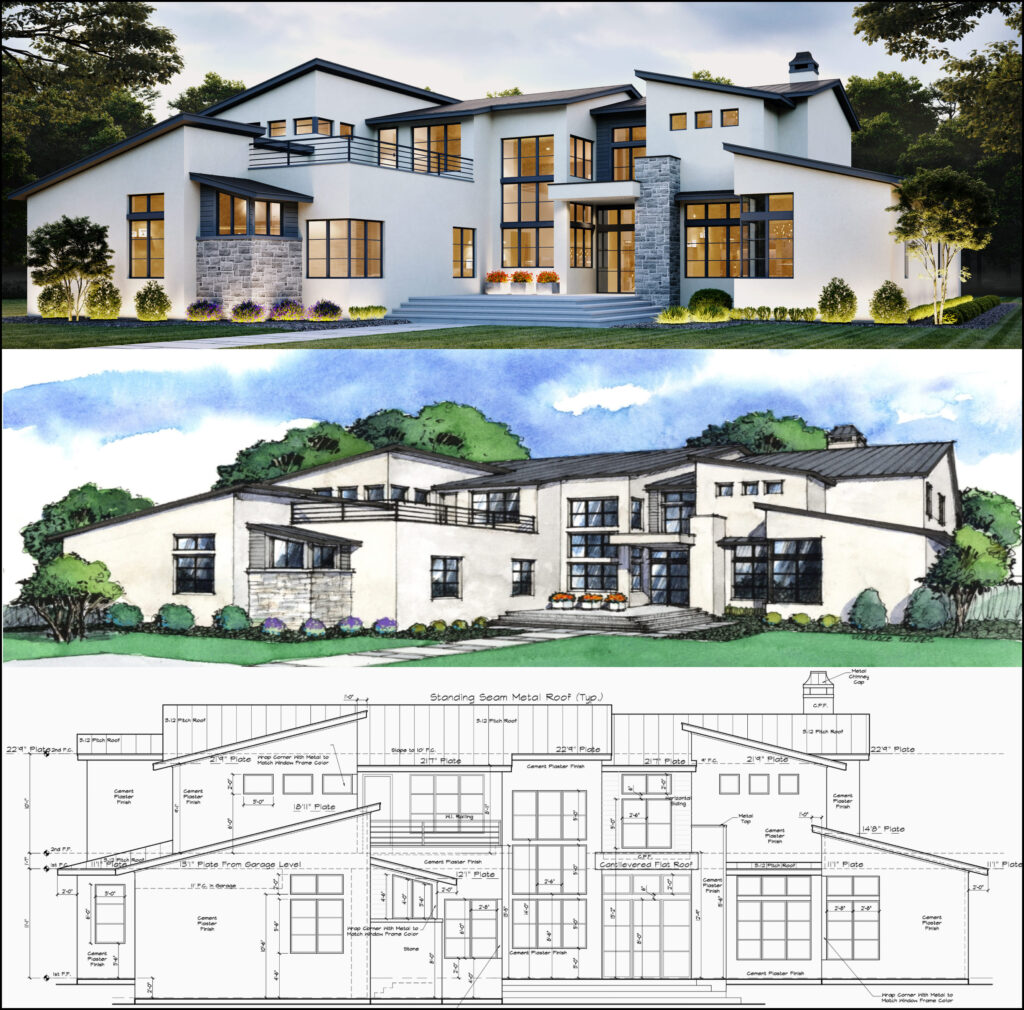Transforming Areas: The Vision of CDA Architects for Modern Living
Transforming Areas: The Vision of CDA Architects for Modern Living
Blog Article
Understanding the Collaborative Process Between Architects and Designers in Modern Construction Projects
The collective procedure in between architects and designers is important in modern-day building and construction projects, as it balances layout intent with design expediency. Discovering these dynamics reveals understandings that can dramatically influence project end results and overall industry criteria.
The Significance of Cooperation
The collaborative harmony in between engineers and designers is essential for the effective understanding of any kind of building and construction task. This partnership unites distinctive proficiency and perspectives, making it possible for the combination of innovative layout with useful design options. By collaborating, architects and designers can guarantee that a project not just meets visual and practical requirements yet likewise complies with safety and security, sustainability, and monetary restrictions.
Collaboration cultivates a shared vision, helping with the alignment of objectives and assumptions from the outset. This alignment is crucial in addressing prospective difficulties and mitigating threats that could arise throughout the project lifecycle. Furthermore, a joint strategy enables the effective appropriation of resources, maximizing both time and cost.
The relevance of collaboration includes the iterative process of layout and building, where comments from designers can educate building decisions, bring about even more viable and sustainable designs. Conversely, designers can motivate engineers to believe artistically about how to accomplish structural integrity without compromising imaginative intent. Ultimately, the joint connection in between designers and engineers is not just beneficial; it is essential to the creation of high-quality, useful, and cutting-edge built settings that meet the requirements of culture.
Communication Strategies and Devices
Efficient communication methods and tools are essential for promoting partnership in between designers and engineers throughout the project lifecycle. Establishing clear networks of communication is necessary to make certain that all staff member are aligned with task goals, timelines, and obligations. Regular conferences, both in-person and virtual, offer opportunities for stakeholders to review progress, address worries, and make notified choices.

In addition, adopting collective communication tools, such as Slack or Microsoft Teams, permits immediate messaging, file sharing, and continuous conversations, advertising a much more active feedback to emerging problems. Document management systems also play a crucial duty in organizing task documents, ensuring that all group participants have accessibility to the most recent information.
Shared Objectives and Job Vision
An unified task vision functions as the foundation for effective collaboration in between designers and engineers (cda architects). This shared vision not just straightens the efforts of both celebrations yet likewise develops an usual framework for decision-making throughout the job's lifecycle. By articulating clear objectives, stakeholders can efficiently navigate the complexities of contemporary building tasks, ensuring that both visual and practical needs are fulfilled
Establishing common objectives includes open dialogue and an extensive understanding of each technique's contributions. Engineers normally focus on style intent, spatial relationships, and individual experience, while designers highlight structural honesty, systems capability, and compliance with policies. When these perspectives are lined up, the outcome is a natural task that sticks to both innovative goals and technological expediency.
Moreover, a well-defined job vision fosters liability among staff member, motivating each participant to take possession of their role in accomplishing the preferred end result. Regular check-ins and joint workshops can further strengthen this commitment, enabling changes to be made as the task progresses. Ultimately, a common vision not only enhances synergy however also boosts the high quality of the final deliverable, bring about successful project conclusion.
The Function of Technology
Leveraging modern technology has actually become essential in boosting partnership between engineers and engineers. The assimilation of sophisticated software devices helps with real-time interaction and info sharing, enabling groups to function much more efficiently and properly. Building Information Modeling (BIM) stands out as a pivotal innovation, allowing both engineers and designers to produce in-depth 3D designs that envelop layout intent and structural integrity. This common graph minimizes read what he said misconceptions and improves the decision-making procedure.
Furthermore, cloud-based platforms allow smooth cooperation, allowing job stakeholders to accessibility and update job information from anywhere. This cultivates a society of openness and responsibility, as modifications can be tracked and evaluated in real-time. Additionally, mobile applications further improve communication, giving on-site groups with immediate access to project requirements and updates.
Arising modern technologies such as expert system and artificial intelligence are additionally starting to play a duty in anticipating evaluation, aiding groups identify potential issues prior to they arise. Ultimately, the function of innovation in architecture-engineering partnership not just enhances process performances yet additionally boosts technology, bring about even more successful project end results. By welcoming these technical improvements, engineers and designers can make certain a much more cohesive and productive joint procedure throughout the building and construction lifecycle.
Instance Studies in Effective Partnerships
Countless study show the extensive impact of efficient partnerships between engineers and engineers on task outcomes. One remarkable example is the partnership on the High Line in New York City City, where landscape designers, designers, and urban click for info coordinators interacted to transform a deserted railway right into a vibrant public park. This multidisciplinary strategy not just improved the visual top quality yet also made sure architectural security and ecological sustainability.

The Burj Khalifa in Dubai better demonstrates the importance of collective initiatives - cda architects. The integration of architecture and engineering expertise made it possible for the task group to accomplish unmatched heights while adhering to safety and security guidelines and visual vision
These examples underscore the relevance of interaction, count on, and shared objectives. In today's complex building environment, such collaborations are vital to here are the findings browsing difficulties and delivering tasks that fulfill both practical and visionary objectives.
Final Thought
In final thought, the cooperation between designers and engineers is essential for the success of contemporary building and construction projects. Efficient interaction techniques, a common task vision, and the integration of sophisticated technologies are vital parts that facilitate this partnership.
Report this page